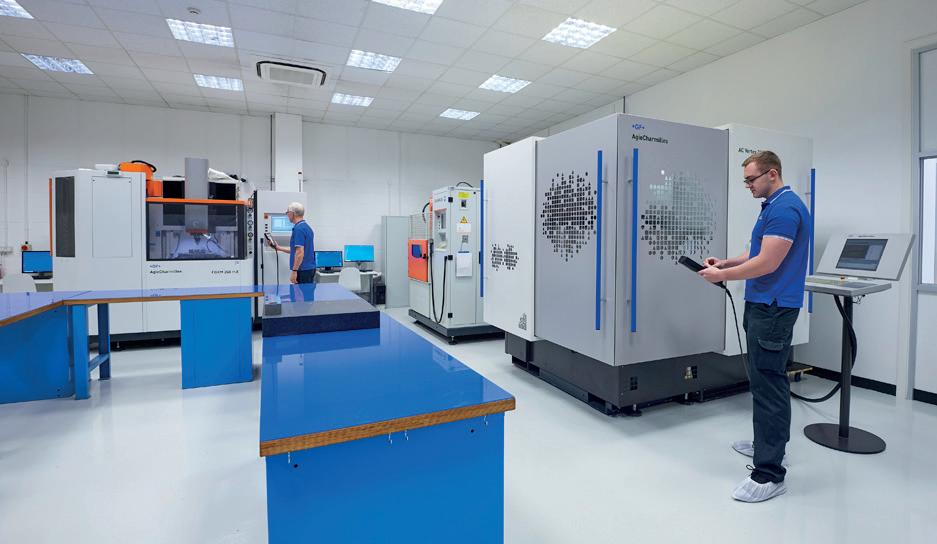
3 minute read
Taking the right path
Medical Plastics News editor Olivia Friett spoke to Arjun Luthra, commercial director of BioInteractions, about partnering with companies working their way through the current regulatory landscape.
The EU Medical Device Directive (MDD) was established in 1994 and was applied to any medical device sold on the European market; but it needed updating, resulting in Medical Device Regulation (MDR).
Technological advances since MDD’s implementation such as apps to monitor health and Software as a Medical Service (SaMS) became the norm in the medtech, meaning regulations have to incorporate this.
DON’T DELAY
MDR was published in May 2017. Originally, certificates issued under MDD were still valid until 25th May 2020, meaning there was three years for companies to prepare their devices for MDR. This was then updated to 25th May 2024.
This has since been updated to the following:
● 26th May 2026 - Class III custom-made implantable devices
● 31st December 2027 - Devices covered by valid MDD/AIMDD Certificates (as of 2023/03/20 and that are Class III, or Class IIb implantable devices excluding well-established technologies (WET) under MDR
● 31st December 2028 - Devices covered by valid MDD/AIMDD Certificates (as of 2023/03/20) and that are Class IIb devices (excluding Class IIb implantable non-WET), or Class IIa devices, or Class I sterile devices or Class I devices with a measuring function;
Devices that did not require Notified Body certification under the MDD and for which the declaration of conformity was drawn up prior to 26 May 2021, now require Notified Body certification under the MDR.
The European Parliament and Council voted for an extended transition to avoid shortages. With issues such as Brexit and COVID-19, it was taking longer not only for companies to file their paperwork, but for Notified Bodies to grant approval.
Mdd Vs Mdr
There is nothing that was in MDD that is not in MDR, but the new regulations include a further 100 articles, five annexes and four rules.
New requirements include reprocessed single-use medical devices, implantable medical devices, devices for disinfection/ sterilisation/cleaning and more.
Updated cleanliness and disinfection regulations were predicted, something that BioInteractions, creator of
TridAnt – a coating that prevents infection for up to 365 days –prepared.
Arjun Luthra, commercial director, BioInteractions said: “We understood that a lot of detail would be required for the coated devices regarding the evidence of their efficacy and safety. Therefore, we were able to collate the necessary information into suitable formats to allow efficient access to this information by the regulator.”
The Challenge
With ongoing MDR delays, BioInteractions has launched its Product Pathway Partnership (PPP) to combat challenges their customers may have.
The new integrated service has been designed to advance organisations’ ability to navigate the medical market more efficiently by streamlining the research and development process of new coated devices, using its analytical resources to determine the best coating for the device.
Utilising over 30 years of experience, the PPP will provide access to all-in-one partner to support growth. The company has had customers go through the new MDR with its technologies and helped legacy partners transition their existing technologies into the new MDR rules.
The PPP focuses on company challenges. Luthra believes half of the challenge is having an innovative technology, with the other half including that technology on the device.
IN-HOUSE
In-house testing means BioInteractions can develop a regulatory package along with the customer to provide the complete data set that regulators would want.
The company goes into the development and support phase where testing takes place. Activity testing is done in-house and then helps to develop the regulatory package with the company to provide the complete data set that the regulators would want, and then finally, go into supporting and providing commercial production facilities so they can take an idea from concept with BioInteractions’ technology all the way through to commercial stage. This makes them a one-stop-shop partner for all their devices, ranging from neurological stents to catheters, large oxygenation devices and large haemodialysis systems.
Rather than the new regulations stunting innovation, it should be leading to higher quality product lines. Working with customers to ensure their confidence in the technology is the priority. In-house testing is a way of ensuring the customer is offering the highest quality products and not compromising with the level of effort that needs to be put in for products to be MDR approved.
Luthra said: “We have a pathway that helps to ensure that you have the highest quality coating on your medical device. There's no delamination, there's nothing falling off, and there's no adverse effects when they're being used in animals or in patients. We provide the tooling for that.
“We understand this is a challenging time for new and old partners and we are happy to support them through these challenges.”










